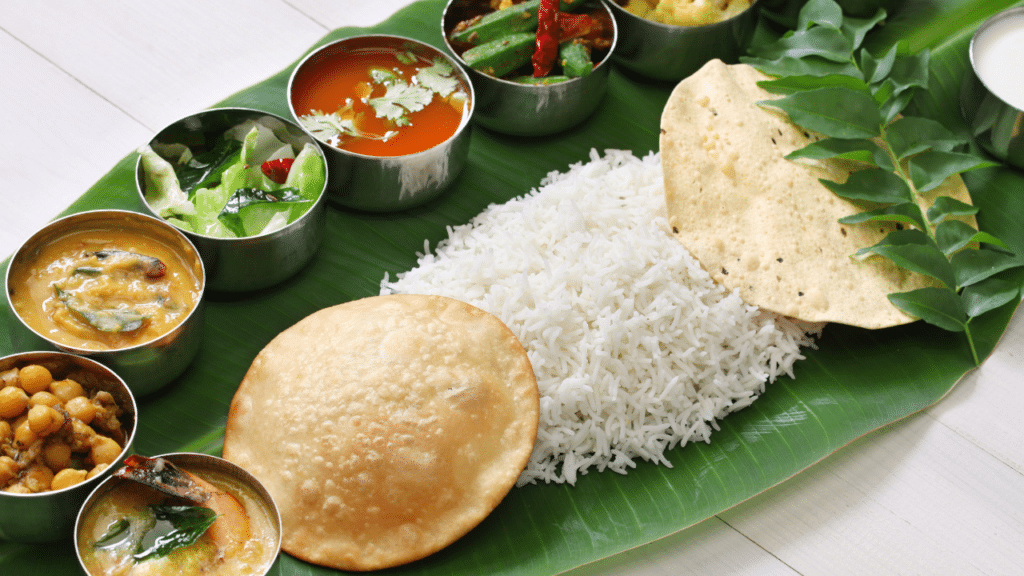In many parts of India and Southeast Asia, eating on a banana leaf is an age-old tradition deeply rooted in culture and heritage. While this practice is commonly seen at temples, festive gatherings, and traditional ceremonies, it is not just about aesthetics or rituals—it has remarkable health and environmental benefits. In this blog, we explore why eating on a banana leaf is a sustainable, healthy, and enriching experience.
Nutritional and Health Benefits
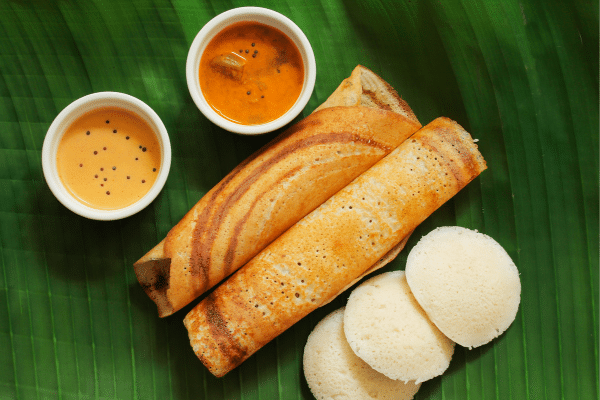
1. Natural Antibacterial Properties
Banana leaves contain polyphenols, which are natural antioxidants also found in green tea. These compounds have antibacterial properties that help eliminate germs and keep food fresh for longer. When hot food is placed on a banana leaf, these beneficial polyphenols infuse into the food, providing additional health benefits.
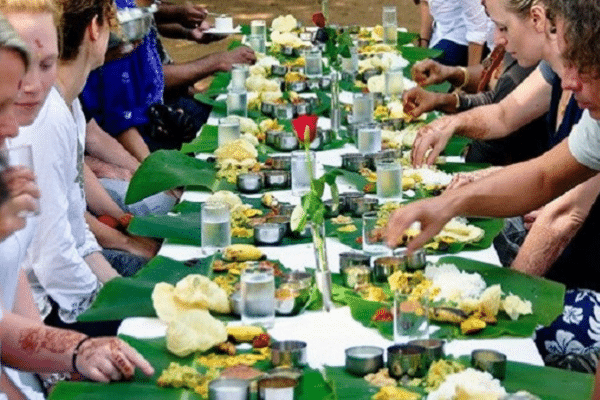
2. Enhances Digestion
Eating on a banana leaf can aid digestion. The waxy coating on the leaf reacts with warm food, releasing digestive enzymes that promote better gut health. The natural compounds in the leaf also help improve nutrient absorption, reducing digestive discomfort.
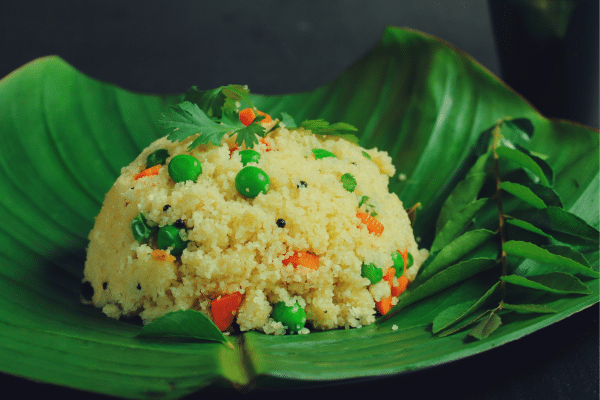
3. Chemical-Free and Safe
Unlike plastic or chemically processed plates, banana leaves are completely free from artificial chemicals or toxic substances. This ensures that you consume your food without exposure to harmful materials that can leach from synthetic plates.
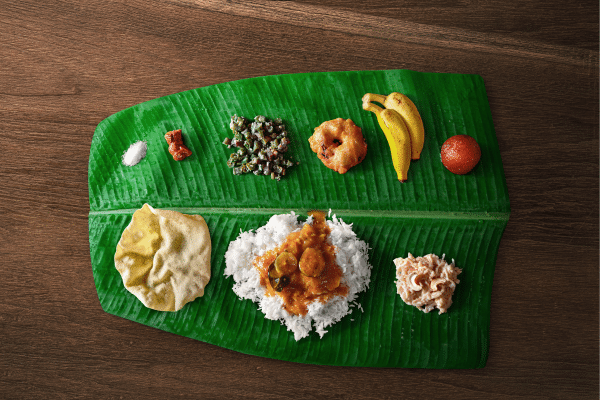
4. Adds a Subtle Flavor
The natural wax on banana leaves imparts a subtle yet unique flavor to food, enhancing the dining experience. This is particularly beneficial when consuming traditional South Indian meals like dosa, idli, or rice-based dishes.
Eco-Friendly and Sustainable Choice
1. 100% Biodegradable
Banana leaves decompose naturally without harming the environment. Unlike plastic or Styrofoam plates, which contribute to pollution, banana leaves can be composted and returned to the soil as organic matter, making them an excellent sustainable alternative.
2. Reduces Water and Detergent Use
Unlike reusable plates that require washing with soap and water, banana leaves are disposable and do not require cleaning. This helps conserve water and eliminates the need for chemical detergents, further reducing environmental impact.
3. Easily Available and Cost-Effective
Banana leaves are abundantly available in tropical regions, making them a cost-effective alternative to plastic or ceramic tableware. Their accessibility and affordability make them a practical choice for large gatherings and festive celebrations.
Cultural and Traditional Significance
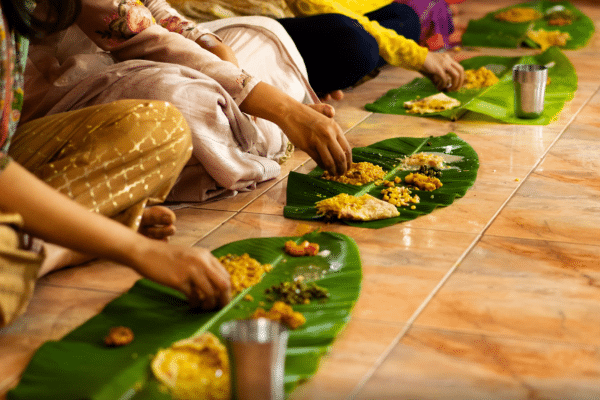
1. Used in Religious and Festive Occasions
In Hindu rituals and festivals, food served on banana leaves is considered sacred and pure. The use of banana leaves in religious offerings is believed to enhance the spiritual value of the meal.
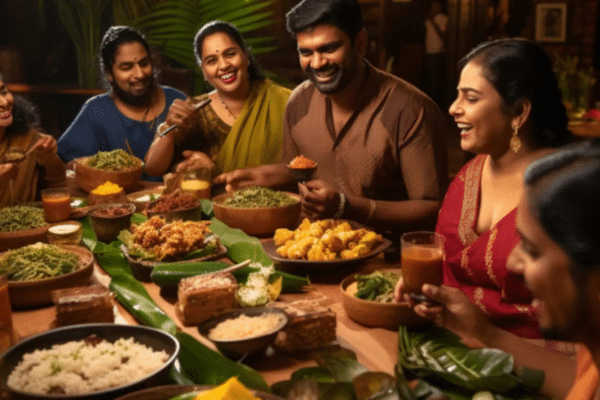
2. Enhances the Aesthetic Appeal
Banana leaves provide a beautiful, vibrant green backdrop for serving food, making meals look more appealing. This visually pleasing presentation is an integral part of traditional Indian and Sri Lankan cuisine.
How to Use Banana Leaves for Eating
- Select Fresh Leaves – Choose clean, fresh banana leaves without any tears.
- Wash and Wipe – Rinse the leaf thoroughly to remove dust or dirt, then pat dry.
- Place the Leaf Correctly – Position the leaf with the veins running horizontally.
- Serve Hot Food – The slight heat from the food will help release the beneficial compounds from the leaf.
- Dispose of Responsibly – After eating, compost the leaf to support an eco-friendly lifestyle.
Final Thoughts
Eating on a banana leaf is not just a nostalgic tradition but a scientifically backed, eco-friendly practice that offers numerous health benefits. From enhancing digestion to reducing environmental waste, this simple habit aligns with sustainable living and promotes overall well-being. So, the next time you get an opportunity to eat on a banana leaf, embrace it wholeheartedly—you are doing both your health and the planet a favor!

